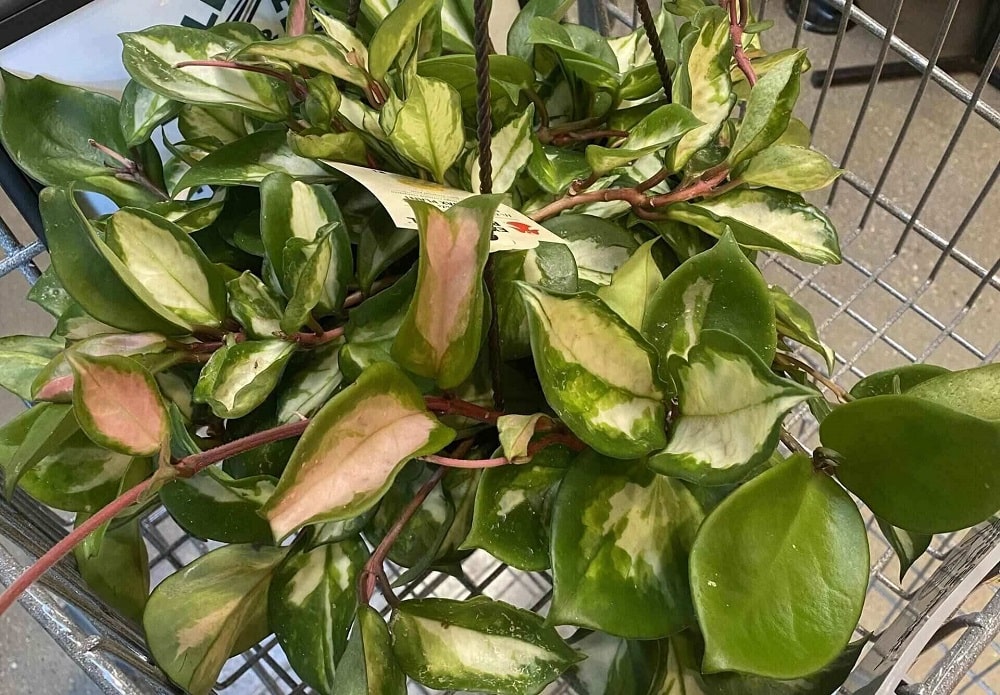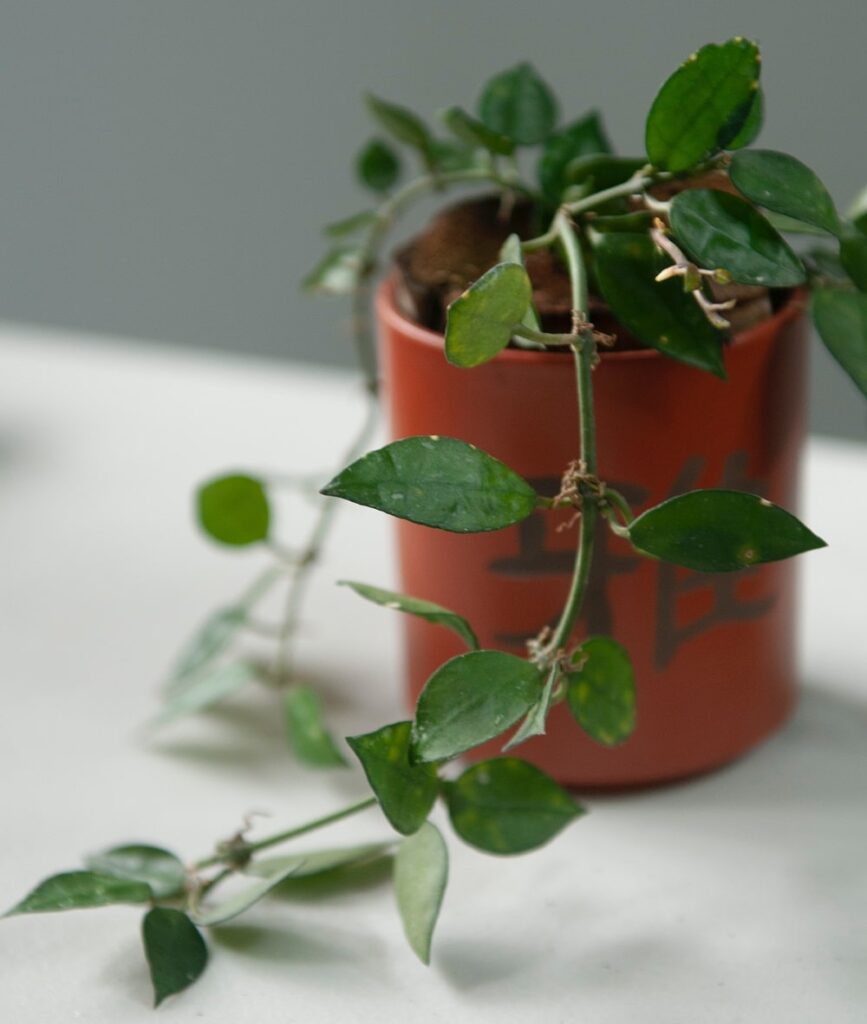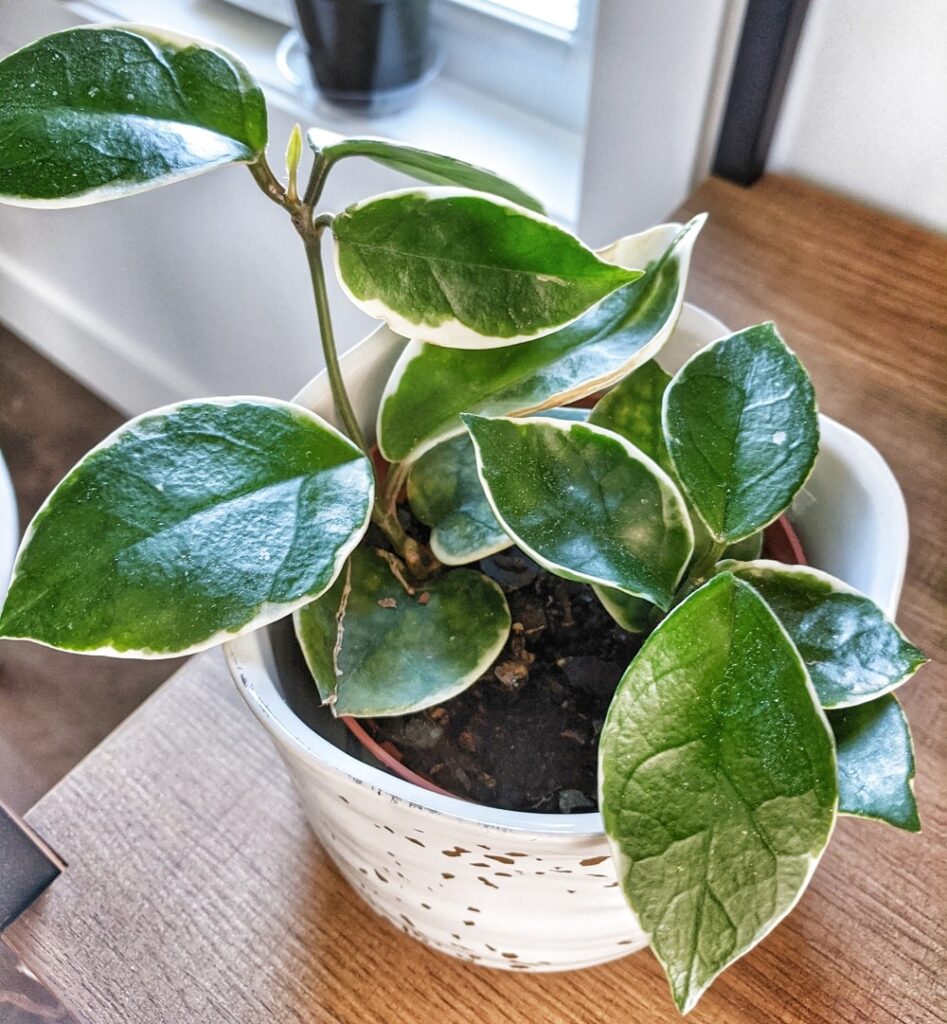I started growing Hoyas due to their stunning foliages and flowers. The leaves and flowers of Hoya carnosa look like wax. It is one of the reasons why Hoya plants are also known as wax plants.
Growing and caring for Hoya plants is super easy. But that does not mean the plant is invulnerable to the common leaf problems.
So, why are my Hoya leaves turning yellow? It is due to improper lighting, overwatering, and poor drainage of the soil. Other possible causes are wrong temperature, acclimation, old foliages, water quality, fertilizer, pests, and diseases.
The rule of thumb is to identify the cause before figuring out how to fix it. Never rush to solve the Hoya leaves turning yellow without identifying the cause. The chance of subjecting the plant to more stress is high.
Today I am going to explain some of the possible causes of yellow leaves on Hoya plants. Take the time to read through it and learn how to fix the problem like an expert.
You May Also Like: 20 Beautiful Hoya Varieties with Pictures

You May Also Like: How to Grow and Care for Aglaonema Plants
Causes of Hoya Leaves Turning Yellow
Overwatering
Overwatering is the crucial cause of yellow leaves on Hoya indoor plants. Waterlogging and soggy soil inhibit the houseplant roots from functioning according to the required standards.
Roots need an adequate supply of oxygen to be healthy. Excess water in the soil reduces aeration, which inhibits oxygen supply to the roots.
The Hoya leaves begin experiencing chlorosis. The leaf condition is where chlorophyll in leaves is broken down to cause the yellow coloration.
The lower leaves are usually the first culprit. You will notice your Hoya leaves becoming soft, swollen, and limp. You will also see brown leaf tips and edges at some point.
Overwatering issues need to be solved immediately. Otherwise, it might cause root rot damages in the long run. The problem is common when using a container that lacks drainage holes.
Another possible cause of overwatering is the frequency of watering the houseplant. If you often water the indoor plant without checking the moisture content, overwatering issue is prevalent.
I recommend inspecting the plant-soil more often and monitor your watering schedule. These two factors will help to prevent overwatering stress to Hoya plants.
Always poke your index finger in the potting mix to determine moisture content. When the topsoil about 2-3 inches is dry, consider watering your plant.
Be sure to purchase a container with drainage holes at the bottom. These holes will help to get rid of excess water from the pot.
Underwatering
Most Hoya plants are epiphytic. It implies that they grow by attaching themselves to other plants in their natural habitat.
The adaptation allows these plants to grow taller and move near the forest canopy. It is the reason why these indoor plants need little water.
Water is crucial in all plants since it helps to move nutrients and minerals to the foliages. Inadequate water supply will make the Hoya leaves dry, wilt, and even turn yellow.
Never allow your beautiful Hoya plant to sit in a drought-like environment. The routine will help to combat common leaf problems like yellowing or drooping.
I recommend checking the potting soil to determine the moisture content before watering. Use your index figure and press into the soil up to 2-3 inches.
If the soil is dry, consider watering the plant. Ensure the potting soil is wet and not soggy. Otherwise, you may risk causing the overwatering issue.
You Might Also Read: How to Care for Hoya Curtisii
Poor Soil Drainage
Excellent drainage of the potting mix is a crucial factor to consider. It will help to prevent issues of overwatering your houseplant.
Besides that, it will make Hoya plants thrive and grow healthy. Proper soil drainage also enhances aeration of the roots and prevents yellow leaves from occurring.
Poor soil drainage usually makes gardeners find it challenging to water their plants. It increases the chance of either overwatering or underwatering the plant.
The container may form a water pool since excess water is not drained out. Waterlog is known for causing poor aeration of roots. The roots end up not working as per the requirements.
Root rot damages are another possible cause of waterlogging. The best option under such circumstances is to consider re-potting your houseplant to save it.
I recommend using about one-third perlite, cactus, and houseplant compost. These ingredients help to form an ideal potting mix for your houseplant.
If you are re-potting your indoor plant, choose a container bigger than the previous one. It provides a large room for your houseplant roots to avoid snuggling and tangling.
You Might Also Like: How to Care for Hoya Linearis
Improper Lighting
Lighting is yet another crucial factor to consider after solving water and soil problems. Hoya plants grow by attaching themselves to taller trees in their native habitat.
These plants take advantage of the gaps near the forest canopy to trap the sunlight. Light helps these plants to synthesize their foods to enhance healthy growth.
Growing the Hoyas in the house can be challenging. The plants can be subjected to improper lighting that causes yellowing of leaves.
Low lighting makes the leaves become darker green. The intention is to capture more light to enhance photosynthesis.
The plant will fail to support all the leaves at a later stage. You will see the lower leaves turning yellow and falling off in the long run.
The low lighting issue is common during autumn. The houseplant will try to adjust and adapt to the low lighting for a short period.
Keep in mind that low light makes the houseplant experience a slow growth rate and it will also take long before watering. This will increase the risk of overwatering causing similar leaf problems.
I recommend placing the houseplant near the window to receive light. If the natural light level is low, consider installing artificial lights for your houseplant.
You should also note that excess direct sunlight is unsuitable for your Hoya plants. Excess sunlight will cause fading of Hoya leaves.
Faded leaves are susceptible to turning either brown or yellow. Sometimes that leaves will develop brown scorch marks or brown foliage tips and edges.
Always place the houseplant in a region it receives bright indirect sunlight. Direct sunlight usually causes damage or reduction and reconfiguration of the chloroplasts.

Nutrients Deficiencies
Proper nutrients supply to your houseplant help to foster healthy foliages and growth in general. It will also help to prevent your Hoya leaves from turning yellow in the long run.
Phosphorus and nitrogen are crucial nutrients for your houseplant. It implies that you need to fertilize your Hoya plants during the growing season to obtain these ingredients.
Remember over-fertilization may distort your indoor plant. Hoya plants are not heavy feeders just like other houseplants.
Too much application of fertilizer will result in the build-up of toxic substances around the root system. You will start seeing the Hoya foliage drying, wilting, turning yellow and brown.
If you happen to have over-fertilized your Hoya plant, consider flushing the potting mix. It will help to get rid of the excess salt build-up,
Another option is to re-pot the plant into a container with a new fresh potting mix. This is the most recommendable practice rather than flushing the potting mix.
Remember not to fertilize your houseplant during winter. It is the period where the plant is dormant and not experiencing any growth.
Besides that, use the correct portion of gentle liquid fertilizer. It will ensure the plant gets the right amount of nutrients to spearhead healthy growth and foliage.
You May Also Read: How to Care for Hindu Rope Plant
Cold and Drafts
Hoya plants are quite sensitive to cold temperatures. Research shows that these tropical plants do not enjoy cold drafts and extremely low temperatures.
Yellow leaves are a sign of displeasure to the cold drafts and low temperatures. Prolong exposure to cold drafts will make the yellow leaves dry out and fall off the plant.
It is now clear that temperature below 50oF (10oC) is unsuitable for Hoya plants to survive. But these houseplants can tolerate higher temperatures when the soil moisture and humidity are high.
A combination of warm drafts and high temperatures tends to reduce the humidity level. The plant will later experience dry and yellow leaves. Sometimes the leaf tips and edges turn brown.
The best option is to keep an eye on the indoor temperature by use of a digital thermometer. It will help identify an ideal temperature for your indoor plant.
Water Quality
Many gardeners usually focus more on proper watering techniques. But this is not enough for the Hoya plants to flourish at home.
Tap water contains some heavy metals and minerals that might not show off the negative impact on your houseplant overnight.
These substances usually build up slowing and accumulate over time. You will notice the leaves of your Hoya plants developing dark spots or turning yellow.
The discoloration of the leaves later inhibits photosynthesis from taking place. Keep in mind that photosynthesis is vital for many plants.
I recommend using distilled water whenever you are watering the Hoya plants and other houseplants. It will help reduce the risk of Hoya leaves turning yellow.
Acclimation
Most of us who live in the United States buy houseplants from a plant house or online stores. These plants are later shipped to our address and experience a lot of problems during the transportation.
The houseplant will try to adjust to the new environment slowly. Acclimation is a natural process, and it is inevitable regardless of your experience.
Yellowing and shedding old foliages is a common circumstance. There is no need to worry so long as you provide the required growing conditions.
Hoya plants usually experience yellowing of lower leaves during the first six weeks of bringing at home. The rule of thumb is to take care of the plant until it stabilizes.
The yellow leaves issue will stop after some time. A similar situation is common during autumn when the light levels decline.
Be sure to provide a better growing condition throughout the acclimation period. Sit back and the yellowing issue will cease soon.
Pest Infestations
Poor growing condition make Hoya plants susceptible to pests. But these houseplants are fairly resistant to pests.
Some of the common pests that infest Hoya plants are spider mites, aphids, mealy bugs, scale, and thrips. These creatures usually suck the cell-sap from the Hoya leaves.
The piercing makes the leaf pattern to change and turn yellow due to the damages. If you notice irregular leaf pattern with yellow spots, it is a sign of pest infestations.
Examine the Hoya leaves on both sides and stems more often to check the presence of pests. You can use a liquid insecticidal treat and get rid of the insects.
I recommend isolating the affect plant to prevent spread of pests to other houseplants. Ensure all the pests have been killed before bring it close to others.
Plant Diseases
Hoya plants are more resistant to diseases when compared to other houseplants. The waxy cuticle offers ultimate protection to the houseplant.
But this does not make the plant invulnerable to diseases. Overwatered Hoya usually becomes weak and susceptible to diseases.
It is due to root rot damages which make the leaves turn yellow or brown. The rule of thumb is to investigate the roots of your plant before rushing to a conclusion.
I recommend you isolate the plant to prevent the disease from spreading. Use a sterilized scissor to prune the damaged roots and leaves. Re-pot the plant to a new container with fresh potting mix.
Old Foliage
Hoya plants usually shed the lower leaves to redirect energy and nutrients to new growths. If your houseplant bottom leaves are turning yellow, it is due to the aging process.
Old foliage turning yellow is inevitable since it is a natural process. I recommend using a sterilized scissor to remove the old yellow leaves.
You May Also Enjoy: How to Grow and Care for Peperomia Plant
Frequently Asked Questions
Why Are Hoya New Leaves Falling-off?
The main reason is due to the root rot issue. Damaged root systems no longer supply nutrients, water, and minerals to the foliages. The leaves will dry out and fall off. Avoid overwatering the houseplant and use a potting mix with proper drainage.
Why Are Hoya Leaves Turning Brown?
It is due to water-related problems. The incorrect amount and tap water cause hoya leaves to turn brown. Tap water contains certain chemical substances that accumulate on the leaves to cause adverse effects. Other causes of brown spots are pests, diseases, and direct sunlight exposure.
Why Are My Hoya Leaves Shriveling?
Hoya plants shrivel when there is insufficient moisture in the soil. Water helps to increase humidity around the plant. If you notice the Hoya leaves shriveling, it could be due to root rot or damages and dry soil.

In Conclusion
I have tried to cover all the possible causes of Hoya leaves turning yellow in this article. Take the time to read through them and try to fix the problem based on the symptoms.
I have been growing and caring for houseplants for over ten years. I find it ideal to identify the cause of the issue before rushing to fix it.
Providing ultimate care to your Hoya plants will guarantee healthy foliage and prevent yellowing issues. The rule of thumb is to avoid overwatering the plant. It is the main culprit of yellow leaves.
More Sources and References
- Jeff Hahn. Managing Insects on Indoor Plants. The University of Minnesota.
- James Schuster. Chlorosis in Plants. The University of Illinois.
- David H. Trinklein. Caring for Houseplants. The University of Missouri.
